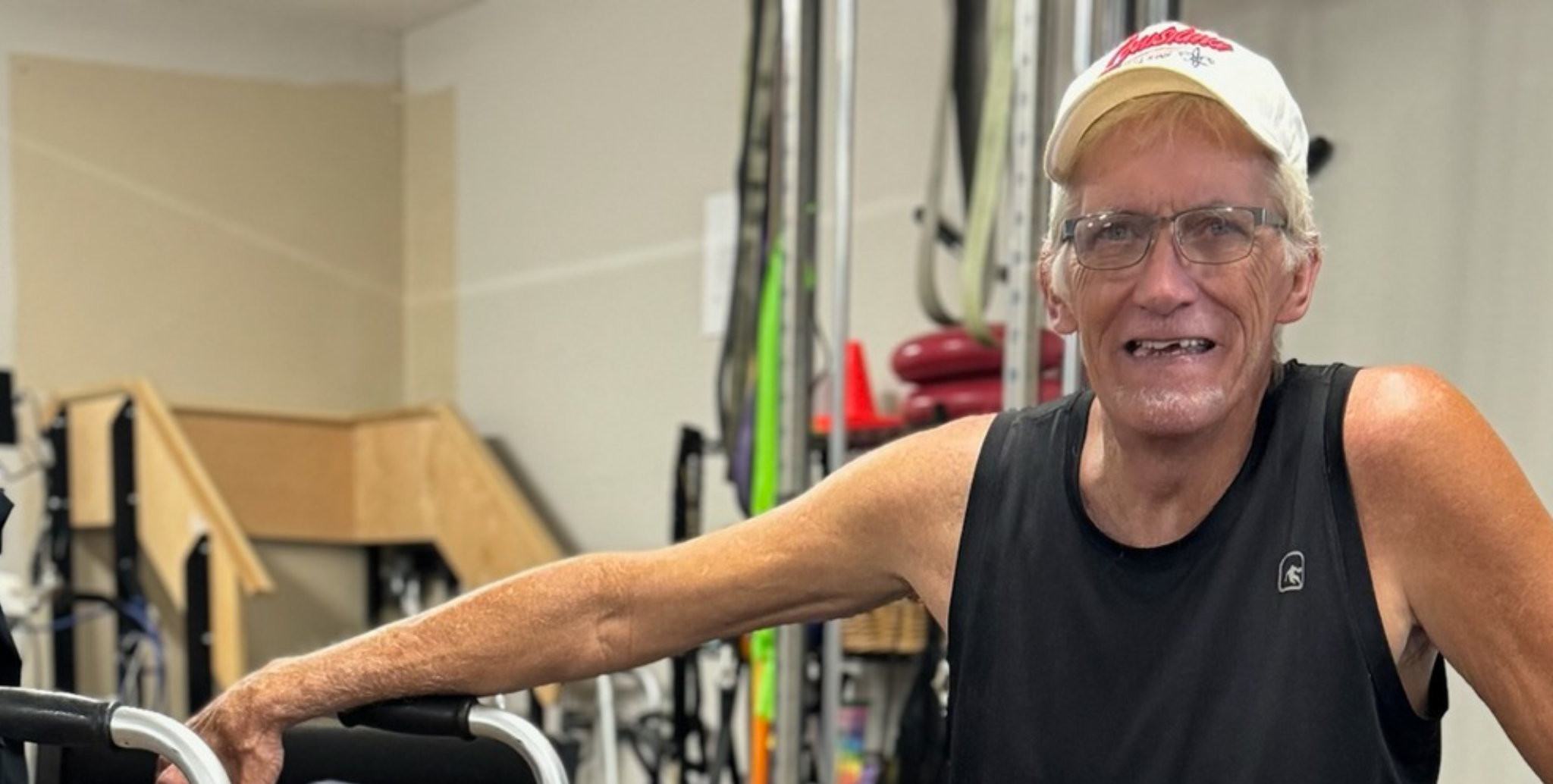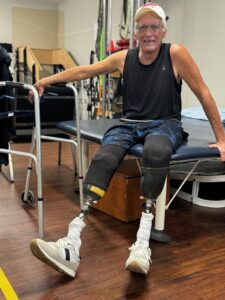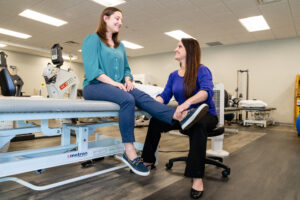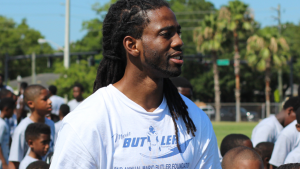Bilateral Amputation Recovery Story: Greg Wiesenberg

Back to physical health resource hub
Greg Wiesenberg, a bilateral, below-the-knee amputee, was told by three orthopedic physicians that he may lose his left knee and upper leg because of a 50-degree knee contracture, which is an inability to fully straighten or extend the knee. A self-proclaimed “fighter and stubborn man,” he refused to accept that.
“After my second amputation, I sat in a wheelchair for 11 months, not knowing that I needed to have physical therapy before I received my prosthetic leg,” Wiesenberg says. “That’s why I got this contracture in my left knee.”
He found a Brooks Rehabilitation clinic five minutes from his home in Hudson, Fla., and made an appointment with Rachel Lopez, PT, DPT, who specializes in physical therapy (PT) after an amputation.
Importance of Physical Therapy Care After Amputation
Wiesenberg diligently works with Lopez twice a week for one-hour PT sessions to loosen up the contracture. In two and a half months, he has significantly reduced the contracture of his left knee to 18 degrees, giving him the ability to straighten his leg and walk comfortably on his prosthetic.
Lopez employed passive movement and manual therapy during Wiesenberg’s treatments. Using electrical nerve stimulation with Tens and E-stim therapy on his hamstring muscles until fatigued, Lopez then manually and slowly pushes against the lower leg to stretch and straighten the knee. For each session, Wiesenberg spends time on the NuStep bike to warm up and help with straightening his left leg. Additionally, he completes seated contraction/release exercises in appointments and at home. All of his hard work and determination has given him “tons of hope.”
“There’s plenty that we can do to help amputees with decreased mobility,” Lopez says. “To help give Greg the confidence to move more easily and get out of his wheelchair is wonderful. For me, it’s instant gratification. For him, he’s motivated to continue his therapy, and he’s positive about his outcome and his quality of life.”
Life After Amputation
Wiesenberg wants to be an advocate for other amputees. If someone needs a little pick-me-up, he is ready to listen and tell his positive story. He does not expect anything in return.
“Just a smile brings me more reward than anything,” he says.
He speaks highly of everyone at Brooks.
“It’s been a great experience,” says Wiesenberg. “All these people go above and beyond to help me and to provide support. I’m very observant. I watch every therapist, how they interact with their patients and their demeanor. It’s been a flawless experience from my first interaction to now. I recently met with Dr. Howard Weiss, medical director of the Brooks Amputee Program in Jacksonville, to see what could be done to further my rehabilitation. We had a phenomenal meeting and I look forward to coming back for procedures to help with the contractures in my knee and lower back.”
Wiesenberg is very pleased with his PT progress that he called Lopez specifically to thank her for helping him and truly making a difference in his life. He looks forward to attending his PT appointments, enjoys his sessions and finds walking outside afterward refreshing.
An avid golfer, his wish is, “to be able to pick up my golf clubs and play one round of golf with my younger son.” We are confident that with Wiesenberg’s positivity and support from Brooks’ dedicated staff, he will be playing golf very soon.
To learn more about Brooks’ amputee rehabilitation program, visit our treatment program page.



